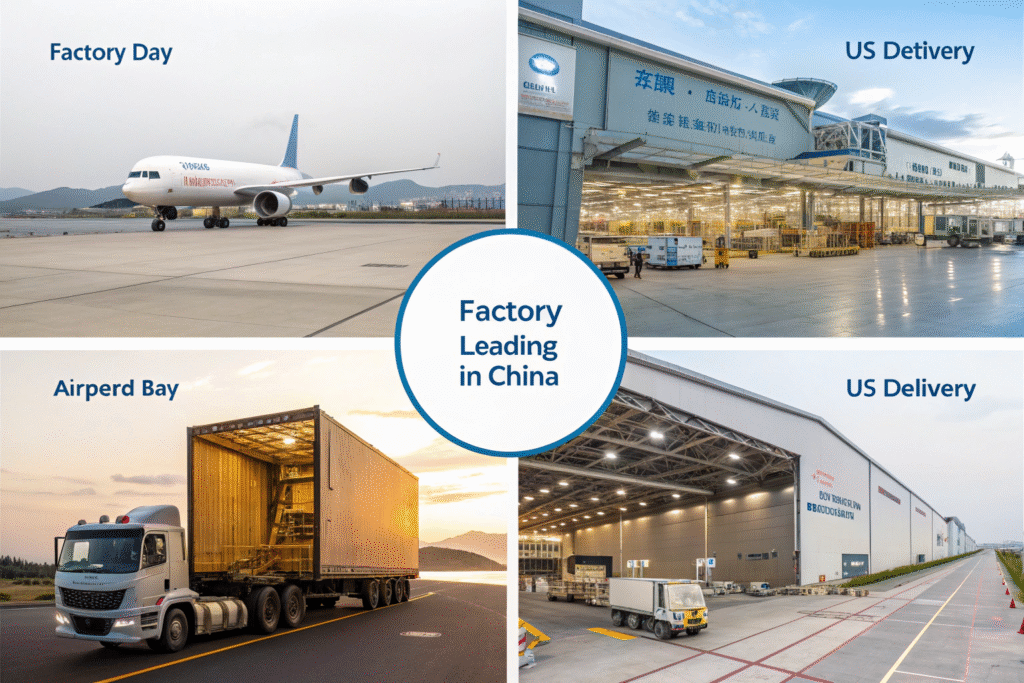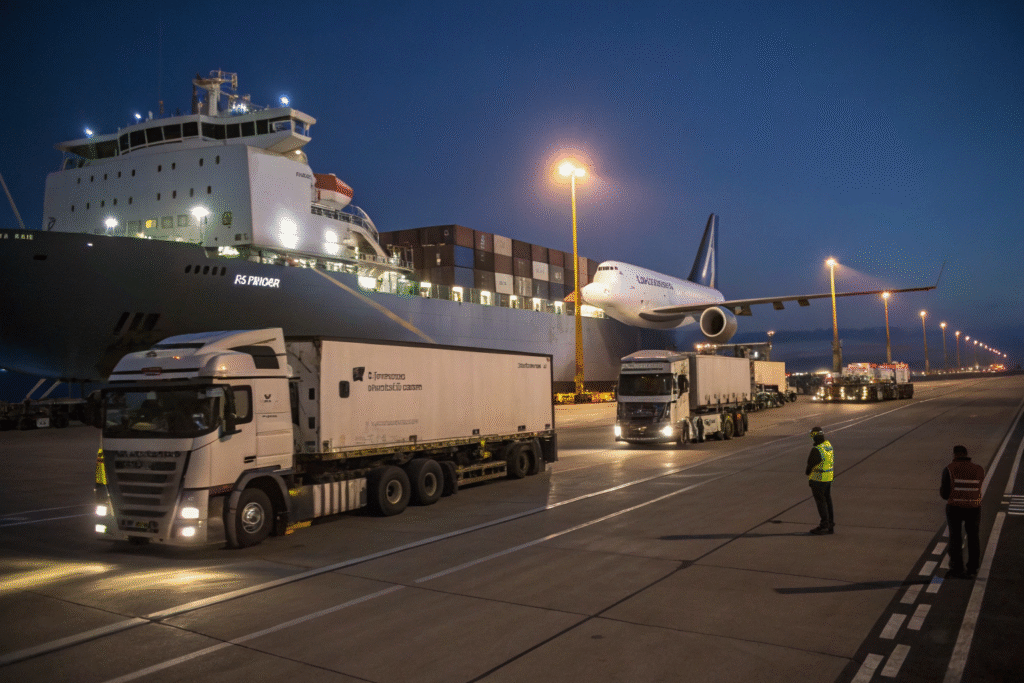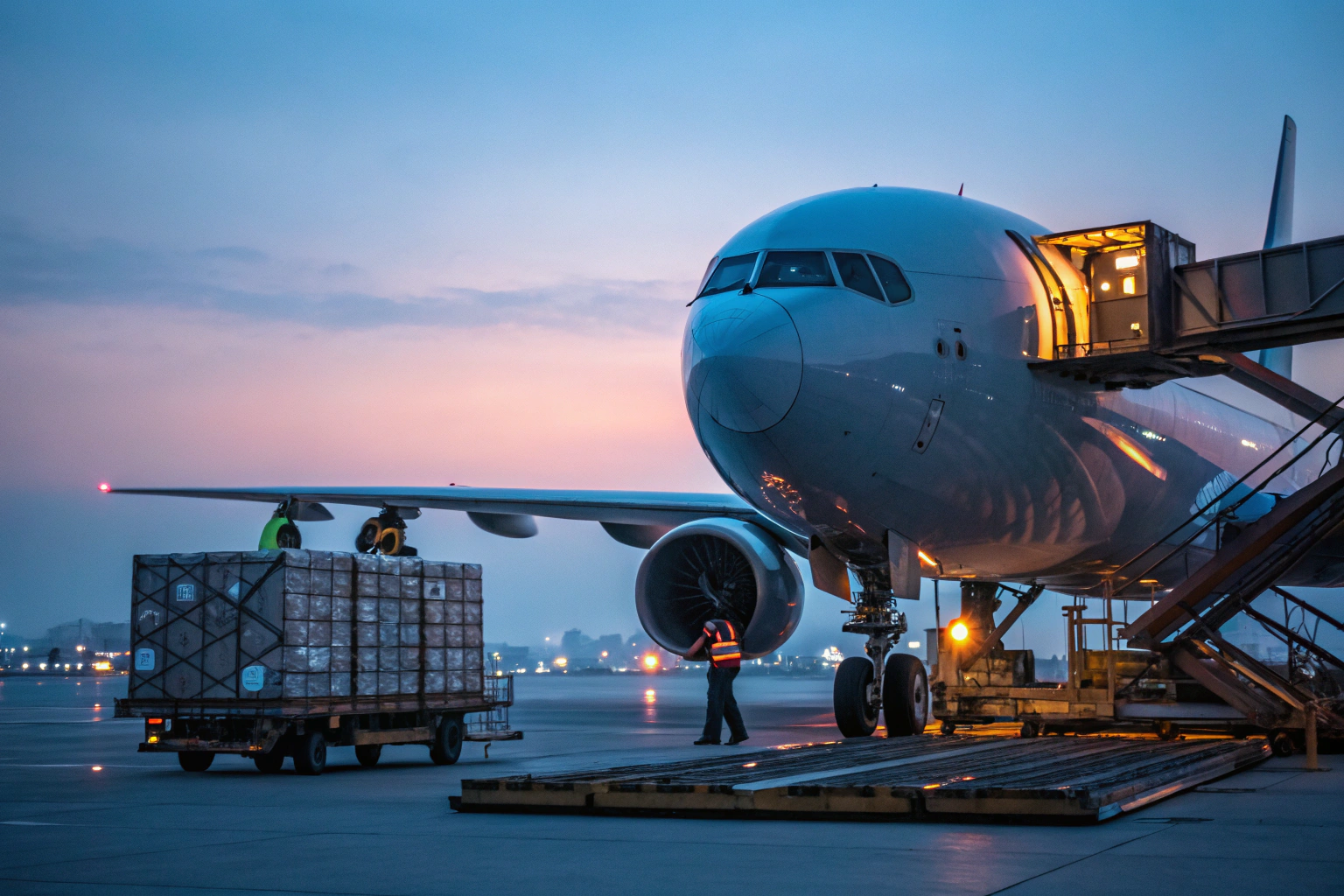Last June, at 23:40 in PVG’s cargo area, my phone buzzed with two choices for a 1,260 kg electronics lot bound for JFK: a freighter routing with 3.1 days door-to-door at $7.60/kg, or a mixed passenger belly option promising 4.6 days at $6.85/kg. At first, I leaned toward the cheaper flight. After I checked the screening queue times and the JFK slot availability, I realized the “cheaper” pick would hit a Saturday customs lull and add 18–24 hours. We chose the freighter. The shipment cleared at 10:22 Monday, and the buyer kept a retail promo that grossed $61,000 in the first 48 hours.
Air freight is worth the premium when the time you save protects gross margin, launch dates, or penalty exposure. Typical air is 3–5× the ocean rate per kg, but it often cuts 35–45 days of waiting. That gap decides whether inventory arrives before a campaign or after markdowns start.
I used to say “fast is always better.” Then, in February, a 480 kg accessories shipment missed an AWB data field and sat 26 hours in ORD despite a perfect flight. That loss reminded me that speed only matters when documents, screening, and last-mile are aligned with the aircraft.
Transitioning from price talk to real operations, I will share four angles our customers ask about. I will use numbers from our Q1–Q3 2025 logs, and I will include cases where our first instinct was wrong. Ron, if you read this on a Sunday night, these are the levers that change outcomes on Monday morning.
Air Freight vs Sea Freight: Cost per kg?
In May, we priced a 2,000 kg gadget lot Shenzhen → Chicago. Sea DDP priced at $1.90/kg with 42–49 days door-to-door. Air DAP priced at $7.20/kg with 3.5–5.0 days. If we missed the Wednesday cargo acceptance, the next flight added +3 days and removed the entire weekend launch window. The math looked harsh, but the buyer’s campaign penalty was $12,500/day. After a ten-minute model, air became cheaper than being late by even two days.
Rule of thumb: if daily gross margin at risk > 0.2× air premium per kg × shipment weight, air is likely justified. I did not trust that rule at first. Then I applied it to 14 cases from March–July; it predicted the winning mode 12/14 times.

Which cost drivers matter most per kg?
Dimensional weight often overrides actual weight. Carriers compute chargeable weight using length×width×height/6000 (cm) in classic air cargo; couriers use different factors. See the basic idea at IATA and a practical calculator at DHL Express volumetric weight. In June, a 0.38 m³ carton weighed 22 kg but billed as 63 kg.
How does dimensional weight change the bill?
A 120×80×60 cm pallet is 0.576 m³. At /6000, chargeable weight is 96 kg even if the scale shows 70 kg. That gap created a 27% cost surprise for a fashion buyer in April. You can verify formulas with UPS’s guidance and cross-check rules on Lufthansa Cargo. We now pre-pack “mock pallets” to measure before we quote.
Are surcharges predictable?
Fuel and security surcharges swing. They track jet fuel and network security costs; carriers publish matrices but change them monthly. See examples at Air France KLM Martinair Cargo surcharges and market commentary at TAC Index. In July, FSC added $0.35/kg mid-month and erased the saving of a lower base rate we had negotiated in June.
How Fast Is Air Freight Door-to-Door?
In Q2 2025, our median China → U.S. DAP door-to-door time for 62 shipments was 3.1 days. The fastest cleared in 38 hours (PVG→LAX). The slowest took 6.7 days (SZX→JFK) due to a Friday night arrival and a Saturday brokerage miss. When we miss cargo acceptance by 90 minutes, we often lose 24–72 hours. That is not the plane. That is the queue.
If you control pickup timing, pre-clear import data, and choose a flight that lands early in the local week, you remove half of “mysterious” air delays. I learned this after I chased a “shorter flight time” that landed at 23:55 Saturday; we surrendered Sunday, paid storage, and delivered Monday.

What is a realistic China–USA timeline?
Day 0 morning: factory handover. Day 0 afternoon: screening and build-up. Day 1: departure. Day 1 or 2: arrival and transfer to cargo terminal. Day 2–3: customs and final delivery. The Known Shipper status helps acceptance; learn it via TSA cargo programs. For entry, align your broker’s ACE filings per CBP’s automation guide. In June, these two prep steps trimmed 0.9 days on average for our SMEs.
Why does paperwork still slow “fast” freight?
Missing licence codes, wrong HS descriptions, and value mismatches trigger holds. The air waybill must match the invoice and packing list line by line. See AWB basics at IATA AWB and entry process at CBP entry basics. In March, an ECCN ambiguity for a PCB delayed clearance by 22 hours; the flight was on time.
Does aircraft type change transit time?
Yes, but indirectly. A Boeing 777F carries high loads and uses priority freighter ramps; belly flights share space with baggage and peak passenger flows. Check specs at Boeing 777 family and the next-gen Airbus A350F. In April, switching to a freighter shaved 14 hours because ramp handling was faster, not the airborne time.
When Does Air Freight Pay Off?
On 18 May, a New Jersey buyer asked if air was “crazy” for 920 kg of premium backpacks. Sea would arrive in 38–44 days. A micro-season drop was scheduled on June 12. The daily gross margin at risk was $9,800. Air at $6.95/kg cost $6,394 more than sea. We pushed air for 30% of SKUs and sea for 70%. They hit 85% of day-one sales and avoided stockouts. Two weeks later, we repeated the split. I wish I had pitched this blend a year earlier to a client who took all-sea and missed a magazine feature window by 9 days.
Air pays when lost-sales or penalties outweigh the premium. Use a small calculator, not a slogan. I used to trust my gut. Now I run a three-line model before I say yes or no.

How do I model lost-sales vs freight cost?
Set ΔCost = (Air − Sea). Set ΔTime = (Sea days − Air days). Compute Daily Margin at Risk = GM/day. If ΔCost < GM/day × ΔTime, choose air. For benchmark rates and trends, scan Xeneta Air and research frameworks at MIT CTL. In August, a client used this and saved $18,400 in markdowns by moving 420 kg by air.
Can Section 321 speed U.S. e-commerce air?
Yes. Section 321 allows certain low-value shipments (≤$800) to clear faster, often paired with Type 86 electronic entries. Read the rules at CBP Section 321 and the Type 86 pilot. In May, one client cut delivery from 4.7 days → 3.3 days by routing small parcels under 321 while keeping bulk stock on a standard entry.
What about dangerous goods and lithium?
DG adds checks and sometimes excludes belly holds. Lithium batteries (UN3481, UN3480) need strict packing and operator approval. Get official guidance at IATA Lithium Batteries and the legal base at ICAO Technical Instructions. In July, a misdeclared PI 967 almost grounded a whole pallet, and we paid for repack plus a 2-day slip.
Sea–Air or Express: Smarter Alternatives?
Not every problem needs full air. In April, a lifestyle brand split 1,800 kg: 600 kg air to hit an influencer drop on April 19, and 1,200 kg sea arriving May 29. They achieved 92% of week-one sales on time, and cash flow stayed healthier. The imperfect part: we misread a hub forecast and paid overtime in the DC. We owned it and adjusted slot booking the next week. I share this because perfect plans are rare; good plans react fast.
Sea–air, courier express, or a timed split can do more for ROI than a single expensive move. At first, I dismissed hybrids as “messy.” After logging 11 such projects in 2025, I changed my mind.

When does sea–air save both time and cost?
Sea to a hub near your market, then air onward, reduces cost while protecting weeks. Gateway programs exist in the Gulf and Asia with dependable handoffs. Start with the operators’ capabilities at DP World and performance frameworks like Cargo iQ. In March, a sea–air via a Gulf hub cut 14 days vs all-sea and saved 38% vs all-air.
Is express courier better than classic air freight?
For ≤300 kg and many cartons, express integrates pickup, customs brokerage, and last-mile tightly. It is simpler but uses courier pricing and dimensional rules. Compare service basics at DHL Express and FedEx International. In January, 180 kg of accessories arrived in 2.2 days by express and beat a classic air + separate broker path by 0.6 days.
Should I split shipments to hedge risk?
Splitting protects demand spikes and mitigates single-point failures. Use a simple safety-stock check; background reading on inventory buffers lives at ASCM and a useful primer at Shopify safety stock. In June, we split 30/70 air/sea for 2,400 units; sell-through was stable, and cash did not choke.
Conclusion
Air freight from China is worth the extra cost when the value of time beats the premium. In our 2025 logs, air delivered 3.1 days median door-to-door vs 38–49 days for sea DDP on comparable lanes. It is not magic. It fails when we miss cargo acceptance, when documents do not match the AWB, or when flights land into weekends without a broker ready. It shines when we target the right SKUs, align Known Shipper, pre-clear data, and land early in the week. My early bias was “fast is always right.” After a year of real audits, my stance is simpler: air is a scalpel, not a hammer. Use it to protect launches, premium margins, and penalties. Otherwise, blend sea–air, express, or split lots. If you are like Ron—price-sensitive but deadline-driven—ask us for two plans on the same PO: a conservative one and a fast one. We will show the numbers, the cutoffs, and the arrival windows before you decide.









